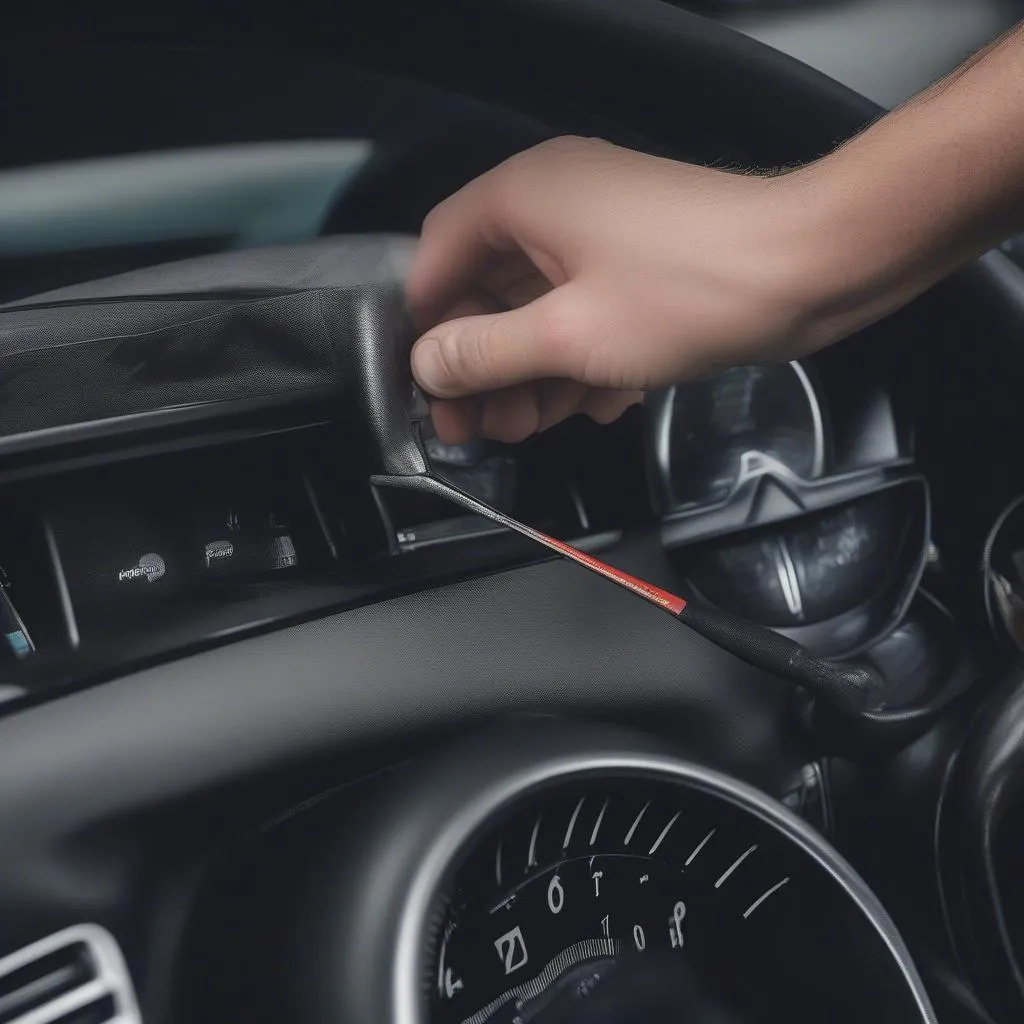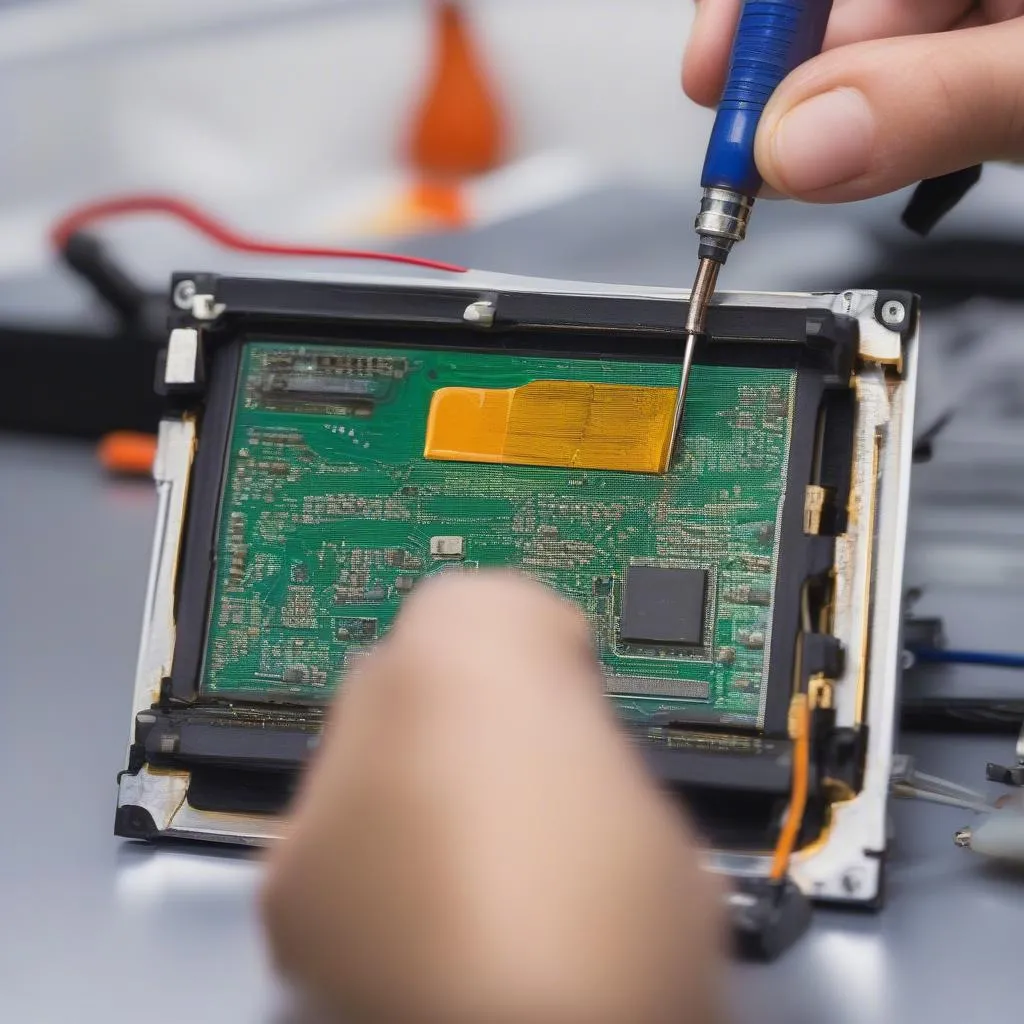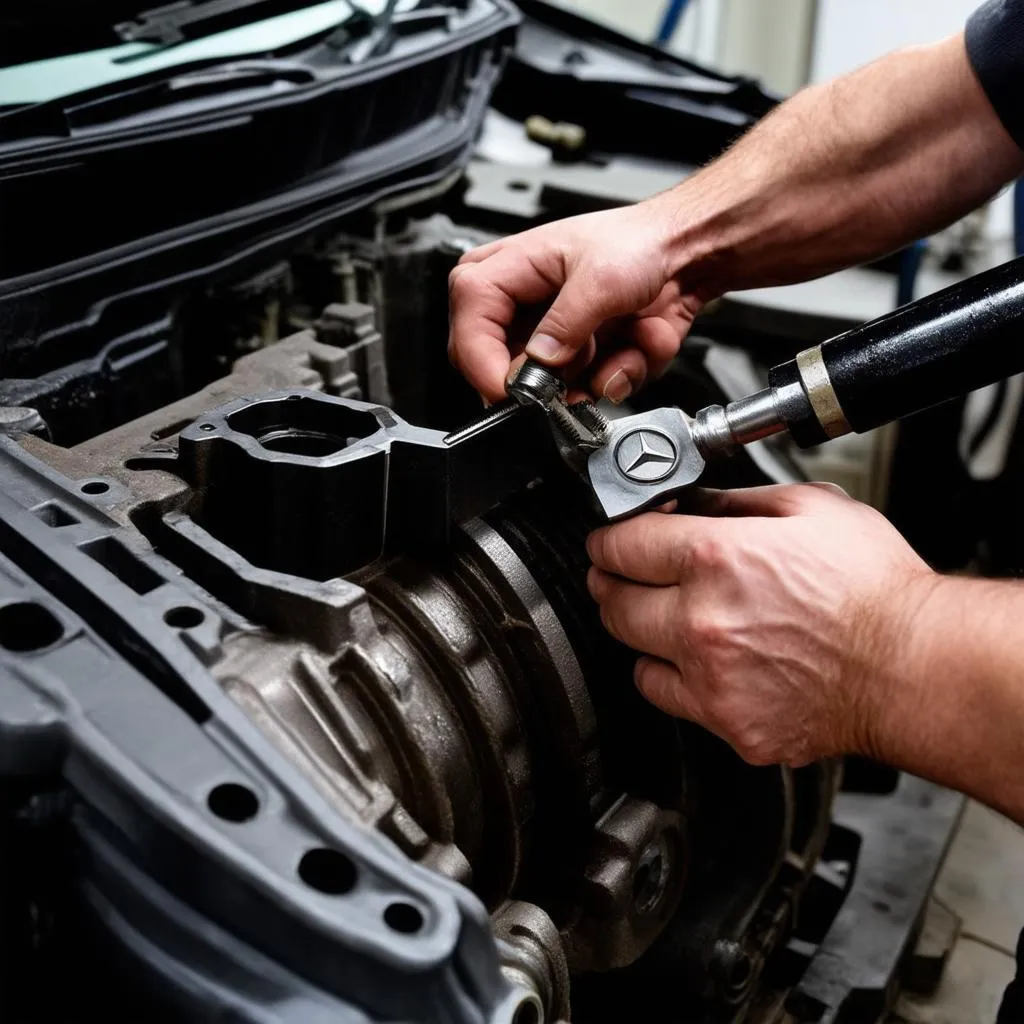Is your Mercedes instrument cluster starting to look like a retro video game with fading pixels or lines missing? You’re not alone. This is a common problem for a range of Mercedes models, often referred to as “pixelated dash” or “LCD display problems.” The good news is a Mercedes pixel fix is possible and often more affordable than replacing the entire instrument cluster. This guide will walk you through everything you need to know.
Why Do Mercedes Instrument Clusters Fail?
The culprit behind most Mercedes pixel problems is the LCD ribbon cable that connects the display screen to the instrument cluster’s circuit board. Over time, this cable can become loose, corroded, or damaged, leading to a breakdown in communication between the components, hence the missing pixels or lines on your display. Factors like heat, vibration, and humidity inside the car can accelerate this deterioration.
Recognizing the Symptoms of a Faulty Instrument Cluster
Early detection is key to preventing further damage to your instrument cluster. Keep an eye out for these common symptoms:
- Missing or Fading Pixels: This is often the first sign of trouble. You might notice sections of numbers or letters disappearing, or the entire display may flicker intermittently.
- Lines Across the Display: Horizontal or vertical lines appearing on your instrument cluster indicate a problem with the LCD ribbon cable.
- Dim or Unresponsive Display: If the display becomes difficult to read, especially in bright sunlight, it could signify a failing LCD ribbon cable or backlight issue.
- Erratic Gauge Behavior: While less common, pixel problems can sometimes affect the functionality of gauges like your speedometer, tachometer, or fuel gauge.
Essential Tools for a DIY Mercedes Pixel Fix
Feeling confident about tackling the repair yourself? Here are the tools you’ll need:
- Plastic Pry Tools: To safely remove the instrument cluster trim without causing any damage.
- Torx Screwdrivers: The appropriate sizes to remove the instrument cluster from the dashboard.
- Soldering Iron and Solder: If you need to replace the LCD ribbon cable, a soldering iron is essential for making a clean and secure connection.
- New LCD Ribbon Cable: Purchase a replacement cable specifically designed for your Mercedes model.
- Patience and Precision: Working with delicate electronics requires a steady hand and attention to detail.
 Mercedes Instrument Cluster Removal
Mercedes Instrument Cluster Removal
Step-by-Step Guide to a Mercedes Pixel Fix
The exact steps may vary slightly depending on your Mercedes model, but here’s a general overview:
- Disconnect the Battery: Always prioritize safety by disconnecting the negative terminal of your car battery before working on any electrical components.
- Remove the Instrument Cluster Trim: Carefully pry off the trim surrounding your instrument cluster using the plastic pry tools.
- Unscrew and Detach the Instrument Cluster: Locate the screws holding the instrument cluster in place and remove them with the appropriate Torx screwdriver. Gently pull the cluster out of the dashboard, being mindful of any wiring harnesses connected to it.
- Access the LCD Ribbon Cable: With the instrument cluster free, you can now access the LCD ribbon cable, usually located at the back or on the side of the unit.
- Repair or Replace the Cable: Inspect the ribbon cable for any visible damage. If it’s loose, carefully reseat it. If damaged, you’ll need to desolder the old cable and solder in the new one. This step requires precision, and seeking professional help is recommended if you’re not comfortable with soldering.
- Reassemble and Test: Once the ribbon cable is secured, carefully reassemble the instrument cluster, reconnect the wiring harnesses, and reinstall it in the dashboard. Reconnect your car battery and turn on the ignition to test if the repair was successful.
 Soldering LCD Ribbon Cable
Soldering LCD Ribbon Cable
Frequently Asked Questions about Mercedes Pixel Fix
Q: Can I drive my Mercedes with a pixelated instrument cluster?
A: While it’s technically possible, it’s not recommended. A malfunctioning instrument cluster can obscure vital information like speed, fuel level, and warning lights, compromising your safety on the road.
Q: Is it better to repair or replace the entire instrument cluster?
A: A pixel fix, whether a DIY repair or professional service, is usually much more cost-effective than replacing the entire instrument cluster.
Q: How much does a professional Mercedes pixel fix cost?
A: The cost can vary depending on your location and the specific Mercedes model. However, a professional fix is generally a few hundred dollars, which is still significantly less than a new instrument cluster, often priced in the thousands.
Q: How can I prevent future pixel problems in my Mercedes instrument cluster?
A: While not entirely preventable, you can minimize the risk by parking your car in a cool, shaded area whenever possible to reduce heat exposure to the dashboard and electronics. Regularly cleaning the interior of your car can also help control humidity levels, protecting sensitive components.
Q: Does Cardiagtech offer any products or services related to Mercedes pixel fix?
A: While CARDIAGTECH specializes in automotive diagnostic tools and software, we encourage you to explore our website for a comprehensive range of products that can help you diagnose and troubleshoot various car problems.
Conclusion
A pixelated Mercedes instrument cluster can be frustrating, but it’s a solvable problem. Armed with the right information and tools, a DIY repair is achievable for those with some technical skills. However, if you’re unsure about any step of the process, seeking professional help is always the safest route.
Remember, early detection is key to a successful and affordable Mercedes pixel fix. Addressing the issue promptly can save you from potential headaches and ensure a clear, functional instrument cluster for miles to come.

